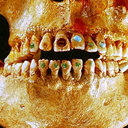An Investigation into the Antifungal Property of Fabaceae using Bioinformatics Tools.
Mots clés
Abstrait
Chemodiversity in plants provides sources of great value which might be helpful for finding new leads in drug discovery programs. Fabaceae as the third largest family of flowering plants was chosen to investigate its possible antifungal activity. In order to increase the effectiveness of the result, molecular similarity methods and chemical data were used. Twelve plants were selected from Fabaceae and collected from the North and South of Iran. Percolation method with 80% ethanol was used for extraction of collected plants. Antifungal activities of these extracts were determined using broth microdilution method against Candida albicans (C. albicans) ATCC 10231, Aspergillus fumigatus (A. fumigatus) AF 293 and Asperigillus niger (A. niger) ATCC 16404. Extracts with promising activity were screened for toxicity with larvae of Artemia salina (brine shrimp). Dalbergia sissoo, Lathyrus pratensis, Oreophysa microphyalla, Astragalus stepporum, Ebenus stellata, Sophora alopecuroides, Ammodendron persicum and Taverniera cuneifolia showed activity against at least one of the microorganisms used in this study. According to the results of our experiment, the extracts of these plants can be used for further investigation in therapeutic research.


